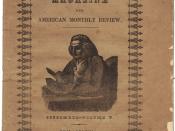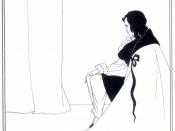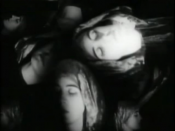In the 18th century, gothic literature was originally written as a response to the age of reason and the politics of England. Gothic literature containing anti-Catholic sentiments and mythical aspects, explored the tension between what is feared and what is desired. The stories were usually set in some kind of castle or old building that portrayed human decay and created an atmosphere of mystery and suspense. Frequently, one of the main characters would be some sort of damsel in distress, threatened by another male character. Edgar Allen Poe's "The Fall of the House of Usher", Charlotte Perkins "The Yellow Wallpaper", and William Faulkner's "A Rose for Emily", all use gothic elements of style in describing the exterior in order to mirror the characters inner thoughts and feelings , as the women are being surprised by the male character of the story.
In Poe's "The Fall of the House of Usher," the story begins on one "...dull,
dark, and soundless day in the autumn of the year...." (Poe 1) From the very beginning, the reader, as a result of Poe's imagery, is aware of a sense of death and decay. Even the narrator, Roderick's childhood companion, describes "a sense of insufferable gloom pervaded spirit" (Poe 1) as he approached the "House of Usher." The term "House of Usher" refers not only to the crumbling mansion but also to the remaining family members living within the structure, and in this case mirror the attributes of Roderick Usher. Throughout the story, many similarities link the character to the physical attributes of the gothic house. The bleak, discolored walls can be compared to the "ghastly pallor" (Poe 8) of the characters skin and the web like fungi on the wall of the house resemble his web like hair. The...



GrEAT ESSAY
tHI IS VERY GOOD ESSAY TO REFER WHEN YOU ARE ASKE TO COMPARE STORIES. ALSO, IT IS FOCUS EQUALLY.
0 out of 0 people found this comment useful.